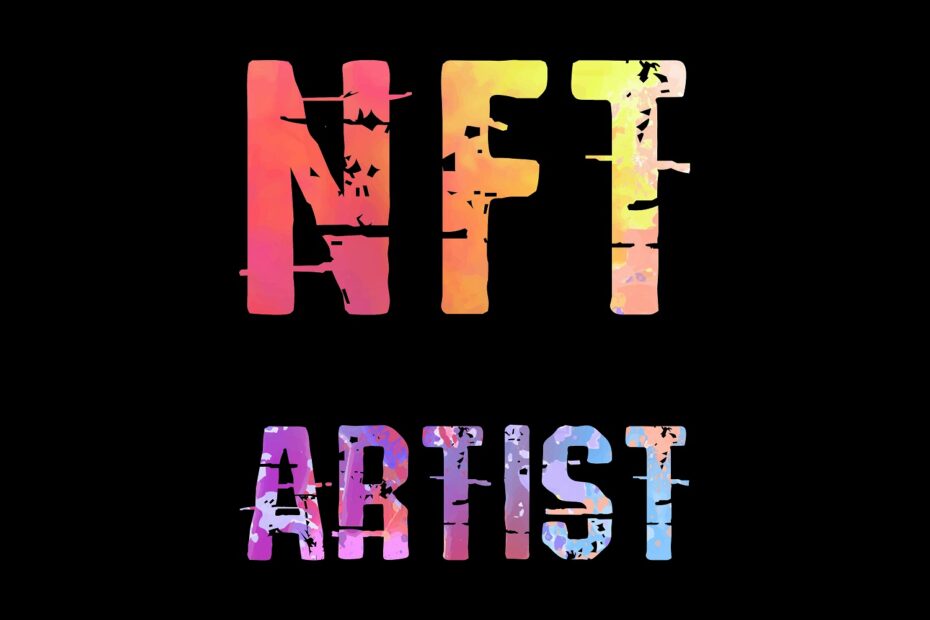Welcome to a revolutionary landscape that is shifting the very foundations of how artists earn, own, and operate: the digital age. While royalty payments have long been the lifeblood for artists—ensuring they receive compensation each time their art is purchased or played—the advent of digital technologies is challenging these traditional models. So, where do NFTs fit into this new world? Picture a reality where artists not only sell their work for an immediate payment but also earn every time that work is resold, almost like an everlasting digital signature of their creative brilliance. Intrigued? So are we. This article aims to dissect how Non-Fungible Tokens (NFTs) are transforming the way artists look at royalties, and why you should care.
The Past and Present: A Look at Traditional Royalty Models
A Historical Perspective on Royalties
Rewind a few decades, and you’ll find artists inking deals with galleries and record labels to sell their physical pieces of art or music albums. These traditional agreements often entailed a straightforward royalty structure: Artists would get a percentage of the initial sale, and possibly some residuals from reproductions like prints or merchandise. But once the artwork left the hands of its first buyer, the artist usually saw no further financial benefit. That’s the historical perspective on artist royalties—a system with glaring limitations.
The Pros and Cons of Traditional Models
One advantage of the traditional royalty model is its simplicity. Artists know what percentage they’re going to earn from initial sales and subsequent merchandising. However, these systems lack long-term financial benefits for artists. For instance, if an artwork becomes highly valued over the years, the artist gains no share in that appreciation unless there are specific clauses in place, which is rare. Additionally, tracking and collecting royalties can be cumbersome, riddled with legal hurdles and opaque accounting practices.
What Are NFTs and Their Role in the Art World?
What Exactly Are NFTs?
Enter NFTs, or Non-Fungible Tokens, the digital age’s answer to the limitations of traditional royalty models. Unlike other digital assets like cryptocurrencies, NFTs are unique: each token has distinct information or attributes that make it different from any other token. It’s like owning an original painting rather than a print. This uniqueness is achieved through blockchain technology, which certifies the originality and ownership details of digital assets.
NFTs and the Art World
In the art world, NFTs serve as a groundbreaking tool, giving artists the ability to tokenize their work. This means that each piece of art becomes a digital asset, one that can be bought, sold, and owned just like a physical painting—but with the added benefit of programmable royalties through smart contracts. Every time the NFT is resold, a preset percentage can automatically go back to the artist, creating a long-term revenue stream that was unimaginable in the traditional system.
The Future is Now: How NFTs are Revolutionizing Royalties
Changing the Dynamics of Artist Earnings
Let’s talk about the future—though, in many ways, the future is already here. NFTs are revolutionizing how artists approach the concept of earning and royalties. Traditional revenue streams for artists were often ‘one-and-done’ scenarios. You sold a piece of art, and that was it—no additional earnings, unless your deal involved some licensing specifics or other exceptional circumstances. NFTs are turning this traditional model on its head. With NFTs, smart contracts allow artists to capture royalties not just on the initial sale, but every time the art changes hands.
Real-World Examples of Artists Benefiting from NFTs
The power of NFTs becomes palpable when we look at real-world examples. Take the case of digital artist Beeple, who sold an NFT artwork for $69 million. Because of the NFT structure, Beeple will continue to earn every time the art is resold. Another artist, Krista Kim, sold her digital art for 288 Ether (approximately $500,000) and is guaranteed a percentage every time her art changes ownership. These are not isolated stories; many artists are moving toward this revenue model, relishing the continued financial benefit.
Creating and Selling NFT Art
Creating Digital Art Suitable for NFTs
So, you’re an artist intrigued by the financial and creative freedoms promised by NFTs. Your first task is to create digital art that can be tokenized. You’ll want to work with digital design software like Adobe Photoshop, Illustrator, or specialized 3D software if your art is more dimensional. The art should be saved in a format that retains its quality, such as PNG or JPEG.
Minting Your First NFT
After your digital masterpiece is ready, the next step is ‘minting’ your first NFT. Minting is the process of turning your digital art into a unique token on the blockchain. To do this, you’ll need to select a platform (which we’ll discuss in the next section) and follow their specific guidelines to upload your artwork and convert it into an NFT.
Setting Up a Royalty Structure Using Smart Contracts
Here’s the revolutionary part: setting up your royalty structure using smart contracts. Smart contracts are self-executing contracts with the terms of the agreement written into code. You can set a specific percentage to be paid to you every time the NFT is resold. Platforms usually make this easy to set up as you mint the NFT, ensuring that you reap the benefits of secondary sales.
Top 5 NFT Platforms for Artists
1. OpenSea
Features: Largest NFT marketplace, supports various types of digital assets, simple minting process
Pros: High visibility, multiple blockchain compatibility
Cons: Competitive marketplace can make it hard for new artists to stand out
2. Rarible
Features: Specializes in art and collectibles, offers ‘liquidity mining’
Pros: Artist-focused, ability to receive $RARI tokens as rewards
Cons: New platform, less established reputation
3. Foundation
Features: Curatorial approach, targets digital artists and collectors
Pros: High-quality art, supportive community
Cons: Need an invite to create and sell
4. SuperRare
Features: Focus on high-end art, one-on-one artist invitations
Pros: High-quality buyer base, encourages serious artists
Cons: Highly selective, difficult to join
5. Zora
Features: Dynamic pricing models, directly syncs price with demand
Pros: Novel pricing model, allows for fluctuating values
Cons: Complex pricing structure can be difficult to navigate
By now, you should have a deep understanding of the transformative power of NFTs in revolutionizing artist royalties. The digital age has ushered in unprecedented opportunities for artists to not only get their fair share but to also participate in the continued financial lifecycle of their work. So, why wait? Step into the future and tokenize your art today.
Ethical and Legal Concerns
Ethical Concerns Around NFTs
While NFTs offer an empowering financial model for artists, they aren’t without their ethical concerns. One of the most cited issues is their environmental impact. The process of minting NFTs, especially on networks like Ethereum, is energy-intensive and contributes to carbon emissions. As an artist, one has to weigh the financial benefits against the environmental toll. Some platforms are taking steps to address this by either offsetting the carbon footprint or transitioning to Proof of Stake (PoS) mechanisms, which are less energy-consuming than their Proof of Work (PoW) counterparts.
Legal Considerations: Intellectual Property Rights
For artists entering the NFT space, understanding intellectual property rights is crucial. Merely minting your artwork into an NFT doesn’t protect it from being replicated or used without permission. Artists must still take steps to register their works and enforce their copyrights. Also, because NFTs are global and can be sold anywhere, jurisdictional issues might arise that complicate the enforcement of these rights.
Some FAQs Answered On The Relevant Topic
How do NFT royalties work?
When you mint an NFT, you can embed a smart contract that pays you a certain percentage every time the NFT is resold.
Are NFTs bad for the environment?
Many blockchains that support NFTs are energy-intensive, but this is a growing concern being addressed by the community through more sustainable technologies.
What about copyright?
Minting an NFT doesn’t grant you copyright. Copyright must be registered separately and is subject to the laws of each jurisdiction.
Tips for Artists New to NFTs
If you’re new to the NFT space, start small. Learn the ropes by exploring popular platforms and possibly even purchasing a small, less expensive NFT to understand the buying process. Always consult a legal advisor about intellectual property concerns before you start minting.
In Conclusion, NFTs are creating groundbreaking shifts in how artists perceive and receive royalties, offering unprecedented control and financial benefits. However, as with any significant change, there are ethical and legal dimensions that require thoughtful consideration. Despite these challenges, the underlying promise of NFTs is too robust to ignore. Therefore, for artists seeking to maximize their earnings and retain control over their creations, diving into the NFT world isn’t just an option; it’s an imperative financial strategy for the digital age.

Eric Dalius is The Executive Chairman of MuzicSwipe, a music and content discovery platform designed to maximize artist discovery and optimize fan relationships. When he’s not working for MuzicSwipe, he perhaps hosting the weekly podcast “FULLSPEED,” engaging with inspiring entrepreneurs from various sectors. Additionally, through the “Eric Dalius Foundation,” he has established four scholarships for US students. Stay in touch with Eric on Twitter, Facebook, YouTube, LinkedIn, Instagram, and Entrepreneur.com.

